bounce rate
description: percentage of visitors who enter the site and then leave ("bounce") rather than continuing to view other pages within the same site; measure of the effectiveness of a website in encouraging visitors to continue with their visit
22 results
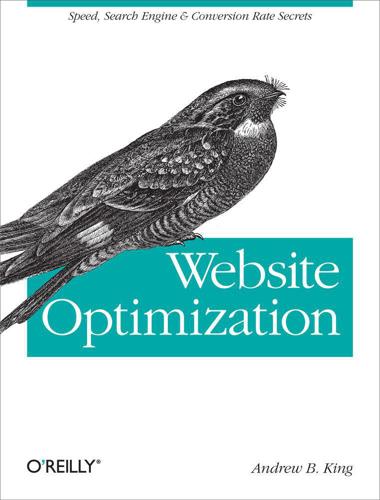
Website Optimization
by
Andrew B. King
Published 15 Mar 2008
, Microsoft, and Everybody Else eMetrics Summit, Website Optimization Metrics, Unique visitors encoding process, Optimizing videos for the Web error handing, Monitor User Rendering Time, Clean Up After Yourself, Bounce rate (and simple engagement) Ajax considerations, Monitor User Rendering Time, Clean Up After Yourself high bounce rates, Bounce rate (and simple engagement) ETags, Three ways to cache in, Target files by extension for caching eval( ) statement, Bundle Your Scripts, Choosing Data Formats Wisely exact matching, Keyword Discovery, Selection, and Analysis exit rate (metric), Exit rate (or page exit ratio) Expires header, Method 3: Make Requests with an Old If-Modified-Since Header, Three ways to cache in, Three ways to cache in cache control, Method 3: Make Requests with an Old If-Modified-Since Header, Three ways to cache in set into future, Three ways to cache in ExpiresByType command, Target files by extension for caching F Facebook, Employ social networking and user-generated content fear factors, The six persuaders Federal Express (FedEx), The Unique Selling Proposition (USP) Fedora platform, Target files by extension for caching Fiddler proxy, Prelude to Ajax optimizations Firebug extension, Prelude to Ajax optimizations, Firebug: A simple alternative, Enhance Firebug with YSlow, Enhance Firebug with YSlow Firebug toolbar, Prelude to Ajax optimizations waterfall reports, Firebug: A simple alternative YSlow support, Enhance Firebug with YSlow, Enhance Firebug with YSlow Firefox browser, Inline Images with Data URIs, Disadvantages of inline images, Firebug: A simple alternative data URIs, Inline Images with Data URIs, Disadvantages of inline images IBM Page Detailer, Firebug: A simple alternative Fireworks, Put it on paper and build graphical mockups, Step 2: Resize and Optimize Images Flanders, Example RSS cache Flash, Flash fires, Flash fires, Flash fires, Unprofessional design, The cost of banner advertising, Flash optimization tips, Step 9: Minimize Initial Display Time, JavaScript Page Tagging div element support, Flash fires, Flash fires fast start techniques, Step 9: Minimize Initial Display Time index limitations, Unprofessional design optimization tips, Flash optimization tips SEO trick, Flash fires tracking events, JavaScript Page Tagging web page problems and, The cost of banner advertising FlashObject class, Flash fires Flickr, Employ social networking and user-generated content font shorthand property (CSS), Tip #2: Use Descendant Selectors, Shorthand properties frame rates, Optimizing videos for the Web, Optimizing videos for the Web frames, Eliminate (i)frames and JavaScript includes, Optimizing videos for the Web, Optimizing videos for the Web key, Optimizing videos for the Web, Optimizing videos for the Web web page optimization, Eliminate (i)frames and JavaScript includes ftp: URI scheme, Inline Images with Data URIs Fully Loaded time metric, Load times fully qualified domain names (FQDNs), Minimizing HTTP Requests G garbage collection, Clean Up After Yourself Garrett, Ajax Optimization, Ajax: New and Improved JavaScript Communications geographic regions, Discovering personas geotargeting, Differences in Geotargeting GET request, Addressing the Caching Quandary of Ajax getElementById( ) method, Use progressive enhancement GIF format, Step 2: Resize and Optimize Images, Step 2: Resize and Optimize Images goal pages, Goal pages goal setting, Summary of the Differences Among AdWords, adCenter, and YSM, Return on Investment and Profit, Success Metrics = Reaching Goals metrics and, Success Metrics = Reaching Goals PPC recommendations, Summary of the Differences Among AdWords, adCenter, and YSM, Return on Investment and Profit Google, Keywords trump company name (usually), Step 10: Build Inbound Links with Online Promotion, Pay for links, Hurl harmful outlinks, Using Metrics to Set a Budget, Step 3: Use a keyword research tool to generate variations from your list of root terms, Step 3: Use a keyword research tool to generate variations from your list of root terms, The Content Network content network issues, The Content Network keyword stuffing and, Keywords trump company name (usually) Keyword Tool, Step 3: Use a keyword research tool to generate variations from your list of root terms penalizing sites, Pay for links ranking factors, Step 10: Build Inbound Links with Online Promotion Search Query Performance reports, Step 3: Use a keyword research tool to generate variations from your list of root terms Traffic Estimator, Using Metrics to Set a Budget trusting new sites, Hurl harmful outlinks Google AdWords, Differences in Minimum Bids and Quality Scoring, Goals and Values, Keyword Research, Step 2: Research the competition for your root terms, Testing ads the easy way: AdWords optimized ad serving, Dynamic Keyword Insertion in Ads, Pay-per-Click Ad Optimization Summary, Landing Pages for AdWords, Landing Pages for Visitors, Optimizing Bids, Penalties for New Accounts, Bid Gaps, The Content Network, Click Fraud, Click Fraud bidding considerations, Optimizing Bids, Bid Gaps click fraud, Click Fraud, Click Fraud content network issues, The Content Network conversion-tracking scripts, Goals and Values differences in minimum bids, Differences in Minimum Bids and Quality Scoring DKI support, Dynamic Keyword Insertion in Ads evaluating landing pages, Pay-per-Click Ad Optimization Summary KEI considerations, Step 2: Research the competition for your root terms keyword matching options, Keyword Research landing pages for, Landing Pages for AdWords, Landing Pages for Visitors new account considerations, Penalties for New Accounts optimized ad serving, Testing ads the easy way: AdWords optimized ad serving Google Analytics, Optimize your conversion paths to get the click, The perils of third-party widgets, JavaScript Page Tagging, Bounce rate (and simple engagement), Bounce rate (and simple engagement) bounce rate metric, Bounce rate (and simple engagement) chart support, Bounce rate (and simple engagement) Funnel and Navigation Report, Optimize your conversion paths to get the click JavaScript page tagging, JavaScript Page Tagging web page problems, The perils of third-party widgets Google Gears, Delay Script Loading Google Sandbox, Hurl harmful outlinks Google Suggest, Ajax: New and Improved JavaScript Communications Google Webmaster Central, Web Server Log Analysis Google Website Optimizer, Testing Landing Pages, Optimize your conversion paths to get the click, Website Success Metrics, Unique visitors controlled experiments, Website Success Metrics cookie deletion and, Unique visitors testing landing pages, Testing Landing Pages web metrics, Optimize your conversion paths to get the click graphics, Obscure navigation, Obscure navigation, Display large images of products or services, Factor #9: Use Illustrative Product and Service Images—The "Hero Shot", Factor #9: Use Illustrative Product and Service Images—The "Hero Shot", Step 2: Resize and Optimize Images, Step 3: Optimize Multimedia, Step 2: Resize and Optimize Images, Step 2: Resize and Optimize Images, Step 3: Optimize Multimedia, Caching Frequently Used Objects, Speed checklist, Start render caching, Caching Frequently Used Objects embedding keywords, Obscure navigation image compression, Speed checklist loading considerations, Start render product/service images, Display large images of products or services, Factor #9: Use Illustrative Product and Service Images—The "Hero Shot", Factor #9: Use Illustrative Product and Service Images—The "Hero Shot" resizing/optimizing images, Step 2: Resize and Optimize Images, Step 3: Optimize Multimedia, Step 2: Resize and Optimize Images, Step 2: Resize and Optimize Images, Step 3: Optimize Multimedia SEO considerations, Obscure navigation Grove, Load JavaScript on demand (remote procedure calls) gut reactions, Source Credibility: Designing Gut Reactions gyroscopic stabilizers, Optimizing videos for the Web gzip compression, Using HTTP Compression HTTP compression and, Using HTTP Compression H H.264 standard, Optimizing videos for the Web, Optimizing videos for the Web, Optimizing videos for the Web, Optimizing videos for the Web Haig, Factor #3: Optimize the Credibility of Your Logo, Factor #3: Optimize the Credibility of Your Logo Hammocks.com, Hurl harmful outlinks hCard microformat, Summary HCI (human-computer interaction), Step 10: Load JavaScript Wisely head element, Delay Script Loading, Use progressive enhancement script considerations, Delay Script Loading, Use progressive enhancement headlines, Write headlines that pop, Write compelling summaries, Optimize with persuasive copywriting, Optimize with persuasive copywriting compelling summaries, Write compelling summaries keyphrase placement, Write headlines that pop writing engaging, Optimize with persuasive copywriting, Optimize with persuasive copywriting Hello World example, An Illustrative Example, Relying on Ajax Libraries, Relying on Ajax Libraries, Relying on Ajax Libraries, Consider Ajah Ajah version, Consider Ajah Ajax libraries, Relying on Ajax Libraries, Relying on Ajax Libraries, Relying on Ajax Libraries DOM version, An Illustrative Example hero shots, Best Practices for CRO, Factor #9: Use Illustrative Product and Service Images—The "Hero Shot", Factor #9: Use Illustrative Product and Service Images—The "Hero Shot" .htaccess file, Target files by extension for caching HTML, Natural Search Engine Optimization, Write headlines that pop, Consider Ajah, Average compression ratios for HTTP compression, Use progressive enhancement, Load JavaScript on demand (remote procedure calls), Useful content display HTTP compression, Average compression ratios for HTTP compression innerHTML property, Consider Ajah JavaScript support, Load JavaScript on demand (remote procedure calls) keyword stuffing, Natural Search Engine Optimization load order, Useful content display overlaying with DHTML, Use progressive enhancement search-friendly headlines, Write headlines that pop HTTP analysis tools, Prelude to Ajax optimizations HTTP compression, Using HTTP Compression, Average compression ratios for HTTP compression, Compressing content in Apache, Compressing content in Apache, Compressing content in Apache, Compressing content in Apache, Average compression ratios for HTTP compression, Average compression ratios for HTTP compression, Delta encoding (delta compression), Delta encoding (delta compression) Apache support, Using HTTP Compression, Average compression ratios for HTTP compression, Compressing content in Apache, Compressing content in Apache, Compressing content in Apache, Compressing content in Apache, Average compression ratios for HTTP compression average compression ratios, Average compression ratios for HTTP compression delta compression, Delta encoding (delta compression), Delta encoding (delta compression) HTTP headers, Three ways to cache in, Target files by extension for caching, Target files by extension for caching HTTP requests, Step 1: Minimize HTTP Requests, Out-of-order responses, Three ways to cache in, Example RSS cache, Inline Images with Data URIs, Hybrid Analytics Systems caching and, Three ways to cache in, Example RSS cache data URIs and, Inline Images with Data URIs minimizing, Step 1: Minimize HTTP Requests out-of-order responses, Out-of-order responses web analytics support, Hybrid Analytics Systems http: URI scheme, JavaScript Optimization and Packing HttpWatch monitoring program, Prelude to Ajax optimizations httpZip module, Using HTTP Compression human-computer interaction (HCI), Step 10: Load JavaScript Wisely Humanistic personality type, Building trust to close the sale I IBM Page Detailer, IBM Page Detailer, Firebug: A simple alternative, IBM Page Detailer, Under the hood: Waterfall reports, Firebug: A simple alternative if statement, Use JavaScript Shorthand If-Modified-Since header, Method 3: Make Requests with an Old If-Modified-Since Header iframes, Eliminate (i)frames and JavaScript includes, Use an iframe for external JavaScript IIS (Internet Information Server), Target files by extension for caching, Using HTTP Compression, Compressing content in Apache, Example RSS cache cache control, Target files by extension for caching compression support, Using HTTP Compression content negotiation, Compressing content in Apache Schedule service, Example RSS cache image tag, Practice Error Awareness inbound links, Core SEO Techniques, Step 1: Determine Your Keyword Phrases, Buy keyphrased domain names, Step 10: Build Inbound Links with Online Promotion, Leverage higher-ranking pages, Employ social networking and user-generated content, Employ social networking and user-generated content, Be leery of link exchange voodoo, Pay for links, Hurl harmful outlinks, Hurl harmful outlinks, Measuring inbound links best practices, Step 1: Determine Your Keyword Phrases getting high-ranking, Step 10: Build Inbound Links with Online Promotion harmful outlinks, Hurl harmful outlinks leveraging higher-ranking pages, Leverage higher-ranking pages link exchange cautions, Be leery of link exchange voodoo measuring, Measuring inbound links nofollow attribute, Hurl harmful outlinks paid lines, Pay for links primary keyphrase in, Buy keyphrased domain names SEO considerations, Core SEO Techniques social networking, Employ social networking and user-generated content user-generated content, Employ social networking and user-generated content indexes, Obscure navigation, Obscure navigation, Obscure navigation, Obscure navigation, Ajax Optimization Ajax problems, Ajax Optimization Flash limitations, Obscure navigation graphics limitations, Obscure navigation JavaScript limitations, Obscure navigation search engine limitations, Obscure navigation information scent, Optimum link length inheritance, Tip #6: Use Inheritance to Eliminate Duplicate Declarations, Shorthand properties init( ) function, Remap Built-in Objects inline images, Inline Images with Data URIs, Summary, Disadvantages of inline images, CSS and inline images, Summary inner browsing design, Ajax Optimization instances, Instances Internet Explorer browser, List-based menus, Prelude to Ajax optimizations, Memory leaks and garbage collection in Internet Explorer, Inline Images with Data URIs, Firebug: A simple alternative browser toolbar, Prelude to Ajax optimizations conditional comments, List-based menus data URIs, Inline Images with Data URIs IBM Page Detailer, Firebug: A simple alternative memory leaks, Memory leaks and garbage collection in Internet Explorer Internet service provider (ISP), Request statistics invisible text, Natural Search Engine Optimization J Java, Using HTTP Compression HTTP compression, Using HTTP Compression JavaScript, XSSI browser sniffing, Step 6: Optimize JavaScript for Execution Speed and File Size, Step 10: Load JavaScript Wisely, CSS buttons, Mono-image menu rollovers, CSS sprites, CSS sprites, List-based menus, List-based menus, List-based menus, Use JavaScript Shorthand, Target files by extension for caching, Average compression ratios for HTTP compression, Average compression ratios for HTTP compression, Use an iframe for external JavaScript, Use an iframe for external JavaScript, JavaScript Optimization and Packing, Speed checklist, Speed checklist cache control, Target files by extension for caching converting to CSS, CSS buttons, Mono-image menu rollovers, CSS sprites, CSS sprites, List-based menus, List-based menus, List-based menus HTTP compression, Average compression ratios for HTTP compression, Average compression ratios for HTTP compression iframe support, Use an iframe for external JavaScript loading on demand, Use an iframe for external JavaScript loading wisely, Step 10: Load JavaScript Wisely minifying, Speed checklist, Speed checklist optimization and packing, JavaScript Optimization and Packing refactoring, Step 6: Optimize JavaScript for Execution Speed and File Size shorthand statements, Use JavaScript Shorthand XSSI support, XSSI browser sniffing JavaScript includes, Eliminate (i)frames and JavaScript includes JavaScript Object Notation (JSON), Ajax Optimization, Choosing Data Formats Wisely JavaScript page tagging, Types of Web Analytics Software, Web Server Log Analysis, JavaScript Page Tagging JPEG format, Step 2: Resize and Optimize Images, Step 2: Resize and Optimize Images, Step 2: Resize and Optimize Images jQuery library, Relying on Ajax Libraries, Relying on Ajax Libraries .js file extension, Bundle Your Scripts, Compressing content in Apache JScript, List-based menus JSON (JavaScript Object Notation), Choosing Data Formats Wisely Jung, Building trust to close the sale JupiterResearch, Popular Web Metrics K Kanoodle, Google, Yahoo!
…
For reporting purposes, consider using simple engagement, the formula for which follows: Simple engagement = 1 - (single-access visits / total entries) Simple engagement is the reciprocated percentile created by subtracting the bounce rate from 1. In other words, it is an inversion of the "bounce rate" metric. It is a great metric for quickly determining whether visitors find content immediately relevant and engaging. It can point to major deficiencies in a page's design or content. You also can use it to measure the effectiveness of a new ad campaign. ora: Killer Keywords Bounce rate or simple engagement can give an analyst a quick means to identify fundamental issues with a page. Usually a very high bounce rate indicates that there is a loading problem with a server or script on a page, or a major keyword flaw.
…
Therefore, with the high bounce rate, we decided to flag family and murder as negative keywords, thus reducing the likelihood of getting inadvertent traffic. Using these negative keywords reduced our client's bounce rate on those pages, as well as their costs on those campaigns. Figure 10-9 illustrates the bounce rate per search engine referring visits to CableOrganizer.com during a given time period. Baidu and Yandex appear to give the highest bounce. This should not be surprising, as CableOrganizer.com provides no content in the dominant languages of those search engines. Figure 10-9. Bounce rate per search engine referring visits Google Analytics also provides pie charts, comparative charting, and trending to show metrics assigned to certain timelines and composition models.

Technical Blogging: Turn Your Expertise Into a Remarkable Online Presence
by
Antonio Cangiano
Published 15 Mar 2012
Your blog will most likely be relatively popular and grow quickly, but you’ll also have relatively low average pageviews and time-on-site figures and a high bounce rate. (As we’ll see soon, Clicky addresses the issue of social media affecting bounce rate by redefining what a bounce is.) For example, ProgrammingZen.com’s global statistics for this month show 1.18 average pageviews, 36 seconds average time on site, and an 89.40 percent bounce rate. Filtering the statistics for search traffic only shows a much higher average pageviews value, triple the time on site, and a noticeably lower bounce rate. Conversely, the new visits percentage is an excellent 86 percent, regardless of traffic source.
…
The two concepts are not very different, except for the fact that an action such as downloading a file or clicking a link will be counted as an action but not as a pageview. The bounce rate is calculated in a drastically different way, however. Whereas Google might show me an 85 percent bounce rate, Clicky tells me that it’s 25 percent. The difference lies in the fact that the smart team behind Clicky has redefined the concept of bounce rate to better describe the behavior of the user. How Reliable Are Traffic Comparison Sites? As the owner of your blog, you’ll have exact, detailed statistics. However, unless you share these numbers, other people won’t know about them.
…
Translating these regular readers into dollars or into the other benefits you may be after is something that you can concern yourself with once your site is already established and has been running for a few months. In the beginning, your goal is to increase your subscriber count. Sure, other metrics such as visitors, pageviews, time on the site, and bounce rate are all interesting and important in their own way, but nothing beats subscribers as an indicator of growth (and that you are doing this whole blogging thing right). If your subscriber count isn’t growing, your blog is not living up to its full potential. By subscribers, I mean readers that follow your blog via feed or receive your posts via email.

The Art of SEO
by
Eric Enge
,
Stephan Spencer
,
Jessie Stricchiola
and
Rand Fishkin
Published 7 Mar 2012
At SMX Munich in April 2011, Bing’s Stefan Weitz and Google’s Maile Ohye both indicated that it was comparatively simple to find social media spam because the behavior pattern matching is more predictable on the social web than it is with the link graph. Similarly, user behavior on the Web provides many potential signals that search engines can use. Consider the example of bounce rate, which is a measurement of the percentage of visitors to a site that visit only one page. If one site has a 47% bounce rate, and another site that competes with it has a 60% bounce rate, you could consider the site with the 47% bounce rate a better page to show in response to a user’s search query. Search engines measure user interaction with the search results, and if someone clicks on a link, then returns to the results page a few seconds later and clicks a different link, this is a form of bounce that could indicate that the visited resource was of poor quality (i.e., the user did not find what he was looking for at that site).
…
“Search traffic” report from Google Analytics This type of data allows you to see which search engines are delivering the majority of the traffic to your site, and perhaps flag potential problems. Also, over on the right of Figure 4-16 you can see that this site has an unusually high bounce rate. The site owner may want to investigate this in more detail to find out whether the visitors to the site are getting what they are looking for. The next step would be to drill down into the bounce rate metric at the page level and see if there are specific pages that have problems that can be resolved. Yet another thing to look at is which pages are getting the most traffic. Figure 4-17 shows a sample report on that from Yahoo!
…
Clicking on other search results Once a user completes a search and visits a link, a common behavior indicating a problem with a result is that that user returns to the search results, often quite quickly, and then clicks on another result. This is often referred to as “comparison shopping.” Generating new searches Similarly, a user may look at a given search result, then come back to the search engine and modify his search query. Bounce rate Bounce rate is a measurement of the percentage of users who visit only one page on a website. Search engines extend that definition to take into account the interaction of the user with the search results. For example, if a user clicks on a search result, then returns to the SERPs and clicks on another result, that could be an indicator that the first result was not a good response for that search query.

Lifestyle Entrepreneur: Live Your Dreams, Ignite Your Passions and Run Your Business From Anywhere in the World
by
Jesse Krieger
Published 2 Jun 2014
Here are some of the key metrics to focus on when using Google Analytics: Bounce Rate: This metric shows the percent of people who click into your home page and then hit the back button on their browser. It shows how relevant or compelling your homepage was with respect to what the visitor was searching for and expecting. If you just launched and are using AdWords only (as you work on your SEO, of course), a bounce rate of 50% isn’t bad, although ideally, you want it to be much lower. Remember though, you can have a 30% bounce rate with a fully executed SEO and CPC campaign strategy and still make a good profit. To lower your bounce rate, experiment with A/B testing for the home page to see what content visitors respond to best.
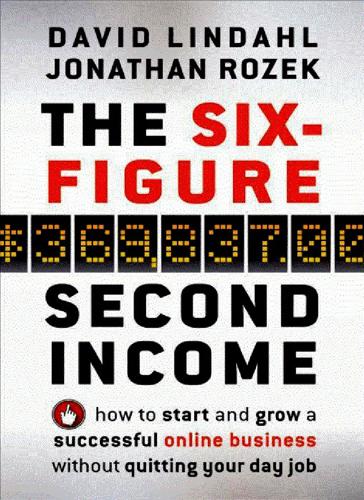
The Six-Figure Second Income: How to Start and Grow a Successful Online Business Without Quitting Your Day Job
by
David Lindahl
and
Jonathan Rozek
Published 4 Aug 2010
If you would like more tips on how to care for your own Schnauzer, just visit her site at www.SchnauzerSecrets.com.” Here’s the point of Step Three—when visitors click on that link, make sure they immediately see something reinforcing that they’re in the right place. There’s a measurement tool called bounce rate, which means how many people arrive on your web page and never click any button before leaving. It’s not uncommon for sites to have a 60 to 80 percent bounce rate, or even higher. That means most of those people land on the page, take a glance, and decide, “That’s not what I expected.” Do not go to all the effort to get people to your web page and then have almost all of them bounce.
…
See also Marketing advertising for others pay-per-click promising instant results Advice, reliability/accuracy of Age, as false barrier to success Alcott.com Article marketing Audio products/services audio recordings for content creation CDs consulting hotlines free audio content FTP tool for downloading audio files MP3 audios teleseminars/webinars toll-free 24/7 recorded lines transcriptions of Backup systems Bank accounts Barriers to success false real BlendTec Blogs Blue Microphones Bonuses Books Boot camps Bounce rates Business certificates Buyers. See Customers Calendars Call to action Camtasia software CDs Checklists Checks/money orders Coaching Collectors Comfort zone, expanding Commuter newspapers Competition as false barrier to success guarantee as competitive advantage price-based uniqueness of product from Computers.
…
See Jargon Testimonials Testing, web site Time, as false barrier to success Toll-free 24/7 recorded lines Tracy, Brian Traffic analysis of quantity of targeted Transcriptions Trends Trial software T-shirts Twitter Uniqueness of products of situations unique selling proposition Upselling Variations on themes Videos DVDs free live event video capture technology YouTube Visualthesaurus.com Webinars Web site accepting money via altering to address nonbuyer issues analysis of traffic to bounce rates building blocks for collector information sites cost of dedicated IP hosting for design of directing prospects to specific pages of domain names for editing e-mail system for graphic design sites Joomla as tool for keywords/key phrases of lead generation using (See Lead generation) membership sites organic ranking of outsourcing work on product idea generator sites security issues for shopping carts on testing improvements to traffic to web forms on web hosting services for Wheel charts Wizard-based systems World Wide Web.

So Good They Can't Ignore You: Why Skills Trump Passion in the Quest for Work You Love
by
Cal Newport
Published 17 Sep 2012
Here’s a typical e-mail from among the many I receive from people asking for advice on growing their own blog audience: “I’ve finished my first month of posting and am at about three thousand views. The bounce rate, however, is incredibly high, particularly through Digg and Reddit submissions, where it can get close to 90 percent. I’m wondering what next steps you think I should take to bring down the bounce rate?” This new blogger was viewing blogging as an auction market. In his conception, there are many different types of capital relevant to your blog—from its format, to its post frequency, to its search-engine optimization, to how easy it is to find it on social networks (this particular blogger invested serious time in submitting every post to as many social networking sites as possible).
…
The only capital that matters is whether or not your posts compel the reader. Some top blogs in this space have notoriously clunky designs, but they all accomplish the same baseline goal: They inspire their readers. When you correctly understand the market where blogging exists, you stop calculating your bounce rate and start focusing instead on saying something people really care about—which is where your energy should be if you want to succeed. Mike Jackson, by contrast, correctly identified that he was in an auction market. He wasn’t sure exactly what he wanted to do, but he knew it would involve the environment, so he set out to gain any capital relevant to this broad topic.

People Powered: How Communities Can Supercharge Your Business, Brand, and Teams
by
Jono Bacon
Published 12 Nov 2019
As with everything you do, measure the performance of that work, evaluate it, and try to spot patterns that either point to problems or potential. Example: Imagine you have published your content plan for a few months (focused on an Engineering persona), and you have noticed that shorter blog posts seem to get a higher rate of hits as well as a better bounce rate. Step 2. Develop a hypothesis. When you spot a pattern, develop a hypothesis that you would like to test. For example, if you notice an increase in traffic given certain conditions, is it worth testing those conditions? Are there types of content, engagement, or events that seem to perform better and are worth testing?
…
Example: To test the short-blog-post hypothesis, we will distribute six blog posts over the coming weeks, all technical in nature (so for the same Engineering persona). Two of these posts will be 150 words long, two will be 300 words long, and two will be 1000 words long. We will promote these equally and track the number of hits, the bounce rate, and the reader rating for each post after it has been live for two weeks. Step 4. Review the results. Review the data from your experiment. Did it provide any insight into whether your hypothesis was correct (or even had the opposite effect)? In some cases the data may be so jumbled that it does not provide concrete data either way.
…
In some cases the data may be so jumbled that it does not provide concrete data either way. If so, it might be worth trying a different experiment to test the same hypothesis. Example: When we look at the data from our blog-post-length experiment, we find that the shorter posts get on average 30 percent more reads and a 10 percent improvement in bounce rate. The longer posts performed the worst. This proves our hypothesis was true. Step 5. Determine next steps. Based on the results of the experiment, review and amend your strategy. Again, never test a hypothesis and then fail to make any strategic adjustments based on it. Otherwise, all of this work is a waste of time.
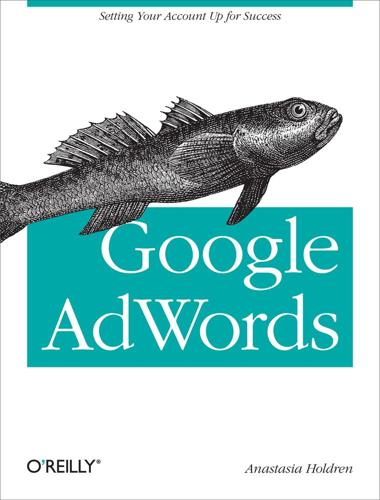
Google AdWords
by
Anastasia Holdren
Published 4 Nov 2011
Bid Simulator uses internal auction data, including Quality Score, to estimate where ads would have appeared and how frequently they would have been clicked with different bids. The simulator estimates click, cost, and impression data for Google Search and the Search Partners, not the Google Display Network. See Also Maximum Cost-Per-Click (Max CPC) Bounce Rate Bounce rate is the percentage of single-page visits to a website. Broad Match Keyword Describes the default AdWords keyword match type. A broad match keyword can trigger ads when a searcher’s query matches the keyword, includes the keyword, or is a variation of it. Keyword variations include synonyms, singulars and plurals, and variants.

Stolen Focus: Why You Can't Pay Attention--And How to Think Deeply Again
by
Johann Hari
Published 25 Jan 2022
GO TO NOTE REFERENCE IN TEXT At a conservative estimate, infinite scroll makes you spend 50 percent more of your time: There’s a debate about the precise numbers for this, because it’s inherently hard to measure. One way of measuring it is what’s called the “bounce rate” (the number of people who arrive on a site and immediately leave without going to any other page on the website). For example, Time’s bounce rate apparently dropped by 15 percent when it introduced infinite scroll in 2014; Quartz readers view about 50 percent more stories than they would without infinite scroll. Both of these figures come from S. Kirkland, “Time.com’s Bounce Rate Down 15 Percentage Points Since Adopting Continuous Scroll,” Poynter, July 20, 2014, https://web.archive.org/web/20150207201902/http://www.poynter.org:80/news/mediawire/257466/time-coms-bounce-rate-down-15-percentage-points-since-adopting-continuous-scroll/.
…
Kirkland, “Time.com’s Bounce Rate Down 15 Percentage Points Since Adopting Continuous Scroll,” Poynter, July 20, 2014, https://web.archive.org/web/20150207201902/http://www.poynter.org:80/news/mediawire/257466/time-coms-bounce-rate-down-15-percentage-points-since-adopting-continuous-scroll/. GO TO NOTE REFERENCE IN TEXT “God only knows what it’s doing to our children’s brains”: T. Ong, “Sean Parker on Facebook,” Verge, November 9, 2017, https://www.theverge.com/2017/11/9/16627724/sean-parker-facebook-childrens-brains-feedback-loop. For more such quotes from tech figures, see A. Alter, Irresistible: The Rise of Addictive Technology and the Business of Keeping Us Hooked (London: Penguin, 2017), 1. GO TO NOTE REFERENCE IN TEXT “aren’t allowed to use that shit”: Roger McNamee, Zucked: Waking Up to the Facebook Catastrophe (New York: Penguin Press, 2019), 146–47; and R.
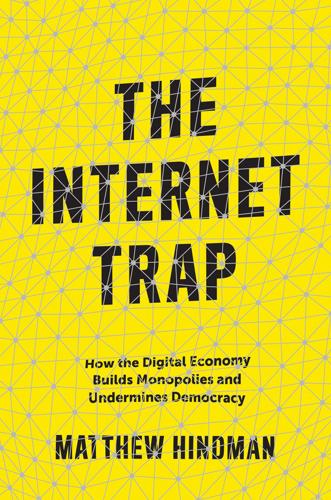
The Internet Trap: How the Digital Economy Builds Monopolies and Undermines Democracy
by
Matthew Hindman
Published 24 Sep 2018
In fact, monthly audience reach is a much shallower statistic not remotely comparable to audited circulation numbers. The number of sites that a typical user will visit over the course of any thirty-day period is huge, and any individual visit means little. Those who visit a site once, spend less than thirty seconds, and then immediately click away still count as visitors. Most news sites have a high “bounce rate,” in which users visit a single page and then leave. A study of the twenty-five most popular national news Online Local News • 107 outlets by the Project for Excellence in Journalism highlighted this pattern. Most unique visitors to these top sites—77 percent on average—are “extremely casual users” who visit just once or twice a month.11 For many sites the portion of casual users exceeds 90 percent.
…
Seattle Times, 159, 190 security, 2, 42, 164, 175–78 server farms, 4, 15, 20, 28–29, 167 Shapiro, Carl, 30 Shaw, Aaron, 170 Sherman Antitrust Act, 175 shipping, 63, 66, 79, 81–82 Shirky, Clay, 12, 165–66 Shoenfeld, Zach, 145 Shop Direct, 26 Sifry, Micah, 7 Silicon Valley, 35, 84 Simon, Herbert, 4 238 • Index Sinclair Broadcasting, 131 singular value decomposition (SVD), 45, 58–59 skill-based habits of use, 34–35 slideshows, 108, 151, 160–61 smartphones, 2, 142–44, 165 Snowden, Edward, 176 Social Reader, 151 software: attention economy and, 2, 4; economic geography and, 65–66; nature of internet and, 164, 167, 176; news and, 105, 107, 110, 143, 155; personalization and, 54; tilted playing field and, 20–23, 26, 33–34, 36; traffic and, 87 Sotheby’s, 42 Soul of a New Machine, The (Kidder), 82 Spanner, 21, 23 speed: attention economy and, 1–2, 21–25, 30, 54, 81–82, 147–48, 166–67, 170, 190, 193n1, 193n2; Google and, 1–2, 21–25, 80, 144, 147, 176; Microsoft and, 24; news and, 146–47; performance dashboards and, 24; profit and, 198n41; stickiness and, 2, 146; traffic and, 1–2, 21–25, 30, 54, 81–82, 146–48, 152, 166–67, 170, 190 statistics: audience reach and, 68, 93, 106, 109, 111, 134, 159, 189; Box aphorism and, 64; Google and, 27, 68; linear models and, 44; Netflix Prize and, 44, 46–47; news and, 106, 109, 111, 115, 122–23, 127–28, 134, 155, 159, 187, 189; smaller sites and, 27; traffic and, 93, 106, 109, 111, 115, 122–23, 127–28, 134 Stecula, Dominik, 169 stickiness: architectural vs. economic power and, 171; attention economy and, 2, 11, 13; cooperation and, 158–59; costs and, 154–58; digital audience dynamics and, 135–37, 146–52; economic geography and, 74; economies of scale and, 16; false solutions and, 137–46; faster load times and, 146; favorable website traits and, 166; Google and, 2, 24, 156, 167, 171; government subsidies and, 133, 137, 140–42; infrastructure and, 13, 23, 152–54; journalism and, 132–37, 140–48, 152, 154, 157, 159–61; mobile devices and, 2–4, 13, 39, 69, 109, 137, 142–44, 147, 152, 160, 165, 167, 170, 179; myth of monetization and, 134–35, 140, 145; nature of internet and, 167, 170–71, 176, 180; networks and, 18; newspapers and, 11, 133, 135–36, 139–41, 146–49, 152–60, 167, 180; nonprofit journalism and, 118, 133, 137, 140–42, 146, 160; open web and, 140; paywalls and, 132, 137–40, 147, 160; personalization and, 48, 53; philanthropy and, 133, 137, 140–42; pivot to video and, 144–46, 202n31; recommendation systems and, 48–49; search results speed and, 2; tilted playing field and, 16, 18, 23, 36; traffic and, 2, 101 Stigler, George, 41–42 Stillwell, David, 59 stochastic dynamical systems (SDS), 85, 185 stock market, 9, 85–88, 92, 95, 100, 185, 199n15 storage, 21–23, 26, 34, 36 Stroud, Natalie, 32 StumbleUpon, 26 subscriptions: attention economy and, 4; economic geography and, 65, 67; methodology on, 181, 187, 190; news and, 138–39, 146–47, 151, 153, 157, 201n8; political economy and, 43–44, 48, 52, 54; revenue and, 4, 17, 43–44, 48, 52, 54, 65, 67, 138–39, 146–47, 151, 153, 157, 181, 187, 190, 201n8; tilted playing field and, 17 Sullivan, Andrew, 70 surveillance, 176–77 Sweet, Diana, 169 switching costs, 8, 34, 63, 72, 78–79, 164 tablets, 3, 39, 137, 142–44, 152, 165 telegraph, 12, 36, 174 telephones, 16–17, 132, 174 television: advertising and, 68; attention economy and, 11–12; cable, 12; economic geography and, 66, 70; innovation and, 12; methodology and, 187–88, 190–91; news and, 11, 104, 107, 110–14, 114, 121–31, 134–35; personalization and, 38, 42; regression analysis and, 190–92; satellite, 12 Tenenboim, Ori, 130 TensorFlow, 21 Tenzig, 27 Texas Tribune, 140 Thomas, Kristin Yates, 31 Thrall, Trevor, 169 threshold effects, 30, 88, 104, 114–15, 119–22, 129, 186–91 Index Thurman, Neil, 39 tilted playing field: advertising and, 15, 17, 25, 28–36, 30; Amazon and, 20, 22, 26, 28; Apple and, 15; apps and, 16, 18, 26, 28; architectural advantages and, 19–25; Bing and, 24, 28, 30–32; blogs and, 17, 25, 35; branding and, 28–32, 36, 86, 166; competition and, 16–17, 21–22, 26–37; concentration and, 19, 30, 32; consumption and, 22–23, 26, 29–34, 37; design advantages and, 25–28; economies of scale and, 7–8, 16–20, 24–25, 37; efficiency and, 20–23, 26, 37; email and, 34–35; experiments and, 24–26, 28, 31–32; Facebook and, 15–23, 26, 35–37; filters and, 19; Google and, 15–16, 18, 20–32, 36–37, 194n24, 195n63; investment and, 15, 19–23, 28–29, 33; journalism and, 35; lock-in and, 34–37, 61, 101, 173; markets and, 20, 24, 28–37; Microsoft and, 15, 20, 22, 24, 26–33, 195n63; models and, 22, 25; Netflix and, 26; networks and, 16–23, 28, 35–37, 193n5; news and, 18–19, 26–36; path dependence and, 35–37; personalization and, 23; quality and, 26, 30–33, 36; rankings and, 25, 31; revenue and, 20, 24, 26, 28–29, 31, 194n39; search engines and, 17, 24, 30–32; software and, 20–23, 26, 33–34, 36; stickiness and, 16, 18, 23, 36; subscriptions and, 17; traffic and, 19–32, 36–37, 194n39; user learning and, 33–34; video and, 22, 24; Yahoo! and, 26, 30–31 Time magazine, 178 Time Warner, 172 Ting, Wayne, 35 traffic: agglomeration and, 82–83; Amazon and, 87; attention economy and, 1, 3, 7–13; audience reach and, 83–96, 99–101, 104, 106–11, 114–18, 121, 129, 134, 169, 186–89; bounce rate and, 106; change and, 99–101; churn and, 9, 84–85, 88–95, 100–1, 163–64, 167; cities and, 82–83; click-through rates and, 56–57; competition and, 83, 86–87, 101; comScore and, 10, 87, 104–10, 113, 116, 119–22, 127, 128–29, 187–88, 199n19; concentration and, 7–8, 30, 32, 63, 83–88, 96, 99–101, 104, 122, 171, 199n15; consumer habit and, 86; distribution of, 84–85, 88–100; dynamics of, 82–101, 184–86; economic geography and, 63, 77–81; • 239 experiments and, 55, 100, 118, 130, 133, 160; Facebook and, 98, 100; favorable website traits and, 166; fluctuations in, 84–86, 93, 99; Google and, 87, 90, 98; growth in, 84, 88, 91, 95–96, 100; high-resolution data and, 87–88; Hitwise and, 84, 87–88, 89; innovation and, 100; investment and, 100; journalism and, 101; leakage and, 88–89, 90, 92; logarithms and, 88–96, 97, 100, 184–86; markets and, 84–90, 94, 95–100, 199n15, 200n18; methodology and, 181, 185, 188; metrics for, 11, 83, 87, 89, 101, 106–11, 115, 128–29, 133–34, 136, 148, 154–57, 160–61, 188; mobile devices and, 2–4, 13, 39, 69, 109, 137, 142–44, 147, 152, 160, 165, 167, 170, 179; models and, 82–84, 95, 99–100, 181–84, 199n15; monitoring software and, 87; multimedia content and, 151–52; nature of internet and, 164, 167, 171–72; net neutrality and, 64, 84, 131, 170–72, 175; networks and, 199n19 (see also networks); news and, 88–91, 96, 99–114, 118–22, 125, 130, 133–40, 143, 146–61; open web and, 132, 137, 140; overlap and, 67, 76–77, 108, 110; page views and, 24, 87, 106–18, 121, 125–29, 151, 157, 160–61, 188–89, 200n18; paywalls and, 138–39; personalization and, 40, 48, 53–56, 60; power laws and, 83, 86, 89, 93, 95–96, 184–85; randomness and, 85, 92, 95–96, 99, 121; rankings and, 7, 25, 31, 54, 84–96, 100, 110–12, 136, 157, 186; recommendation systems and, 39–40, 45, 48–49, 53, 59–61, 149; revenue and, 63, 65–68, 73–75, 79; search engines and, 101; shipping and, 63, 66, 79, 81–82; simulating, 93–99; speed and, 1–2, 21–25, 30, 54, 81–82, 146–48, 152, 166–67, 170, 190; stability and, 84–88, 91, 93, 99–101; statistics and, 93; stickiness and, 2, 101; as stock market, 85–87; surfing and, 77, 79, 107; tilted playing field and, 19–32, 36–37, 194n39; transportation and, 79, 82, 182; unique visitors and, 87–88, 106–11, 128, 134; volatility by, 91–93; Yahoo!

Growth Hacking Techniques, Disruptive Technology - How 40 Companies Made It BIG – Online Growth Hacker Marketing Strategy
by
Robert Peters
Published 18 May 2014
It is a software platform for inbound marketing that helps companies attract visitors, convert leads, and close on sales/deals. Users can manage all of their web content and social media accounts in one location, with tools in place to measure success rates by leads and customers. This is a more effective use of collected data than the traditional analytics of page views, time on page, and bounce rate among others. Hubspot began with 3 customers in 2006 and by 2013 had 10,595. The company follows a strategy of offering daily free content including its popular website grader, which analyzed more than 2 million websites in its first three years of operation. The HubSpot philosophy is that free content brings people to the company’s site thus generating quality leads at a lesser cost than could be achieved with traditional marketing techniques.

Understanding Sponsored Search: Core Elements of Keyword Advertising
by
Jim Jansen
Published 25 Jul 2011
Typically, a bot is endowed with the capability to react to different situations it may encounter. Two common types of bots are agents and spiders. Bots are used by companies like search engines to discover Web sites for indexing. Short for robot (Source: IAB) (see Chapter 2 model). Bounce: a visitor whose behaviors are classified within the bounce rate (see Chapter 7 analytics). Bounce rate: refers to the percentage of people that immediately exit or do not progress beyond the entry page within a certain time limit (Source: modified from Quirk and WebTrends) (see Chapter 7 analytics). Brand: distinctive name or trademark that identifies a product or manufacturer.

The Millionaire Fastlane: Crack the Code to Wealth and Live Rich for a Lifetime
by
Mj Demarco
Published 8 Nov 2010
The Tribe Has Spoken My Web site needed a redesign, and I spent six weeks creating a new look. I was excited, and the world was going to love this design-it was clean, user friendly, and showcased my design prowess. And then I launched it. And the world hated it. Complaints poured in. My site's bounce rate (people who visit one page and immediately leave) skyrocketed. My conversion rate plummeted to virtually nothing. I went from 1,200 leads per day to barely 500. The tribe had spoken. Despite my investment in that redesign, I immediately reverted back to the old version and trashed six weeks of work.
…
In fact, every redesign I've ever done in 10-plus years was met with resistance. The question for critique was, how much was normal? And how much was legitimate? Complaints of change are the least informative and therefore are the ones most difficult to decipher. For my redesign failure, data confirmed that the complaints were substantial. Bounce rates tripled and my conversion ratio suffered. I had to suck up the failure, revert back, and start over. When you change, there will be complaints. Guaranteed. And yes, not all of them are actionable simply because human psychology is in play, not the integrity of your work. Complaints of Expectation Complaints of expectation occur when you negatively violate the expectation of your customer.
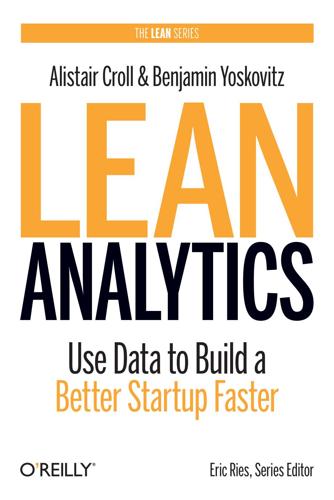
Lean Analytics: Use Data to Build a Better Startup Faster
by
Alistair Croll
and
Benjamin Yoskovitz
Published 1 Mar 2013
The hypothesis was that the feature would be worth the first-time ordering pain, after which ordering would be much easier directly through Instagram. “Convenience was the hypothesis,” noted Massimo. But Massimo and his team were wrong. Not only were orders low, but page views started to drop on the landing page that promoted the feature, and bounce rate was high as well. It just wasn’t resonating. Two weeks after the feature was removed, the number of transactions doubled, and it continues to increase. The bounce rate on the new landing page improved while sign-in goal completions increased. So what did the Static Pixels team learn? “For starters, I think people didn’t transact through Instagram because it’s a very new and foreign process,” Massimo said.

Hello, Habits
by
Fumio Sasaki
Published 6 Nov 2020
And more than anything, the objective of yoga isn’t to strike poses. Once I got a little used to it, I rather enjoyed the fact that there were few guys around. Step 14: Realize that hurdles are more powerful than rewards Faced with massive amounts of information before our eyes, we’re getting more and more impatient. While the bounce rate (or the percentage of visitors who enter a website and then navigate—“bounce”—away without viewing the other pages) for sites that reload within a maximum of two seconds is around 9 percent, almost 40 percent quit looking at the site when the reload time is five seconds. In other words, regardless of how interesting the content on the site may be and no matter what fabulous products are being sold there, things that take time don’t get used.
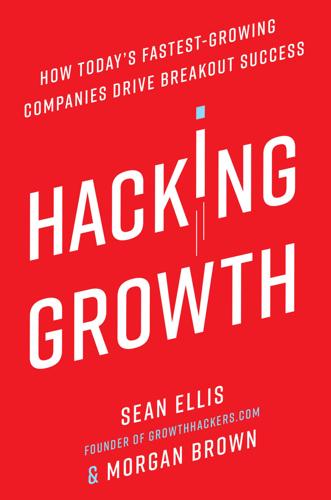
Hacking Growth: How Today's Fastest-Growing Companies Drive Breakout Success
by
Sean Ellis
and
Morgan Brown
Published 24 Apr 2017
Then you need a data analyst who can mine those sources of data for patterns and rich insights that can lead to growth ideas to experiment with. These days most companies, even the most nascent, shoestring start-ups, are keeping close track of basic analytics for their websites and products, such as those captured by Google Analytics. But while metrics like page views, visits, and bounce rates are important to collect, they barely begin to tell the whole story about how customers interact with your product. That’s because these are very surface level metrics that don’t tend to reveal deeper insights into what customers truly value about what you are selling and whether you have achieved product/market fit.

A New History of the Future in 100 Objects: A Fiction
by
Adrian Hon
Published 5 Oct 2020
The drought in ideas was not confined to individuals or communities of any particular ideology or place but seemed to be almost universal. While billions were exposed to new ideas every minute of the day through their lenses and glasses, almost all merely bounced off, leaving no lasting impression. This was not wholly surprising. We can’t be expected to absorb every new idea that comes our way, but the bounce rate was far higher than expected. Politics was one of the worst categories for low memetic diversity, with the US Democratic Party showing signs of epistemic closure when compared against the decentralized parties of the new left. But across the world, voters in general tended to be extremely unwilling to consider new ideas.

Predictive Analytics: The Power to Predict Who Will Click, Buy, Lie, or Die
by
Eric Siegel
Published 19 Feb 2013
Peter van der Graff, “How Search Engines Use Machine Learning for Pattern Detection,” Search Engine Watch, December 1, 2011. http://searchenginewatch.com/article/2129359/How-Search-Engines-Use-Machine-Learning-for-Pattern-Detection. Education portal: “Case Study: How Predictive Analytics Generates $1 Million Increased Revenue,” case study provided by Prediction Impact, Inc. www.predictiveanalyticsworld.com/casestudy.php. Google: D. Sculley, Robert Malkin, Sugato Basu, and Roberto J. Bayardo, “Predicting Bounce Rates in Sponsored Search Advertisements,” Proceedings of the 15th ACM SIGKDD International Conference on Knowledge Discovery and Data Mining, 2009. www.bayardo.org/ps/kdd2009.pdf. Sugato Basu, Ph.D., Google. “Lessons Learned in Predictive Modeling for Ad Targeting,” Predictive Analytics World San Francisco 2011 Conference, March 14, 2011, San Francisco, CA. www.predictiveanalyticsworld.com/sanfrancisco/2011/agenda.php#day1-7.
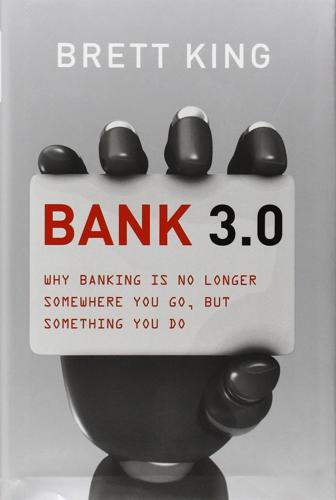
Bank 3.0: Why Banking Is No Longer Somewhere You Go but Something You Do
by
Brett King
Published 26 Dec 2012
The homepage is a hotly contested property in most banks today, with every product team in the retail bank (and in some cases the whole bank) competing to get their hyperlink, product promotion, or anything else on the homepage. This is entirely counterproductive as it clutters the homepage and results in the risk of high bounce rates (we’ll talk more about this in later chapters). When we type in “Savings Account” or “Checking Account” into Google, we do get some optimised product selection experiences, but SEO (Search Engine Optimisation11) is still a challenge for many of these brands. Given the critical nature of online in brand selection, one would think that there would be millions of dollars a year spent on optimising the customer journey, but in most cases there have only been incremental improvements over the last five to six years.

Inner Entrepreneur: A Proven Path to Profit and Peace
by
Grant Sabatier
Published 10 Mar 2025
In addition to using Google Analytics, you can also set up Google’s Looker Studio, which allows for even more customizations across many different tools and platforms. A few important key metrics to pay attention to at this stage are: unique website visitors, visitors by traffic source, page engagement, bounce rate (percentage of users who leave after viewing one page of the website), time on the website, and conversion events that show the number of visitors converting into sales and subscribing to your email list. You should also start analyzing your revenue per website visitor and work to increase it over time.

How to Be a Liberal: The Story of Liberalism and the Fight for Its Life
by
Ian Dunt
Published 15 Oct 2020
A powerful new infrastructure of analysis grew, using websites such as Google Analytics, Omniture and Coremetrics, to collect and evaluate user data. It had its own vocabulary to assess the most cherished behaviour of all: engagement. Measurement centred on the number of clicks, page impressions, time on site and bounce rate – the percentage of users who left after visiting just one page. This was the information and design system of advertising online. But increasingly it also became the status quo for non-advertising too. Social media companies could make more money on advertising when they captured the maximum amount of user time and attention possible.

Seeking SRE: Conversations About Running Production Systems at Scale
by
David N. Blank-Edelman
Published 16 Sep 2018
Edge products, such as site accelerators, wide-area firewall, forward proxies/load balancers, and so on, can suffer congestion issues, human configuration error, and routing failures. CDNs for static objects, such as JavaScript and stylesheets, play a role in perceived user experience; improper configuration can lead to ineffective cacheability and high page load times, leading to increased bounce rates. The ability to diagnose and triage performance has become increasingly complicated with Single-Page Application (SPA) frameworks.4 Indirect impact Some providers impact site reliability in less obvious ways. Based on experience, these are third parties that process transactions on the backend of the technology stack.